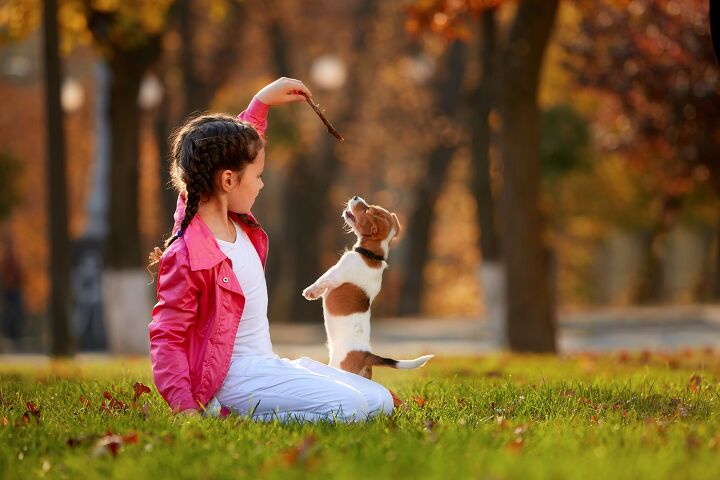Study Finds Link Between Having a Dog and Girls' Physical Activity

A new study finds that having a furry companion at home could help promote healthy physical activity in children, especially young girls.
According to research from the Telethon Kids Institute in Australia, getting a new dog or losing a furry companion is linked with a child’s level of physical activity. This new research shows that having a dog could help promote healthy movement behavior in children.
The study's lead researcher, Emma Adams, highlights the positive influence of dog ownership on children’s activity levels, pointing to potential benefits that start from early childhood.
“We saw a significant jump in daily physical activity in children whose families acquired a dog over the study period, while those whose families experienced the loss of a dog recorded a steep drop-off in activity,” added Adams.
The research teams from Telethon Institute and the University of Western Australia followed 600 children aged between two and seven years old, over a three-year period to determine the impact dog ownership (or loss) has on physical activity levels.
The results showed that getting a dog or losing a family companion is associated with significant changes in children’s activity levels. Surprisingly, young girls showed the most significant response.
“The results were particularly noticeable in girls, with girls who acquired a dog increasing their light intensity activity and games by almost an hour a day (52 minutes).”
“On the flipside, there was a marked drop in light intensity activity and games in girls who experienced the loss of a dog, with their activity dropping by 62 minutes a day,” said Adams according to Independant.
Children wore accelerometers during waking hours for seven days at a time to measure sedentary time, screen time, and physical activity. Parents were also asked about their childrens’ activity levels.
Half of the children participating in the study didn’t own a dog at any point during the study period, 204 children had a dog for the entire three years, 58 got a dog during the study period, and 31 children lost their furry companion during the course of the study.
Data showed that girls who got a dog increased their light intensity activities and games by almost an hour a day (52 minutes). At the same time, girls who lost a dog experienced a decrease of 62 minutes a day in the same activities.
Researchers observed that unstructured physical activity, such as walking with the dog or playing in the garden saw an increase for both boys and girls who got a dog during the study.
“If we excluded dog walking and playing, there were no changes in the unstructured physical activity, so we could see the changes in physical activity were actually from the addition of those dog-related activities,” said Adams.
On the other hand, children who lost their dog decreased their unstructured physical activity by 10.2 sessions a week for girls and 7.7 sessions for boys.
“Regular physical activity from an early age is essential for children’s physical and mental health development, but few children or adolescents are meeting recommended daily levels. Our findings indicate that having a dog in the family could help promote healthy movement behaviors in children and reduce their short- and long-term risk of chronic disease.”
Although this study discovered a positive link between dog ownership and increased physical activity Adams stresses that it’s not a call for everyone to get a dog.
“It’s important to note that we’re not telling families to just go out and get a dog - having a dog comes with many responsibilities and won’t be right for everyone.”
Instead, this study encourages dog owners to use canine companionship to increase physical activity.
Join the PetGuide community. Get the latest pet news and product recommendations by subscribing to our newsletter here.

Nevena is a freelance writer and a proud mom of Teo, a 17-year-old poodle, and Bob, a rescued grey tabby cat. Since childhood, she had a habit of picking up strays and bringing them home (luckily, her parents didn't know how to say NO). When she's not writing for her fellow pet parents, Nevena can be found watching Teo sleep. To her defense, that's not as creepy as it sounds!
More by Nevena Nacic























